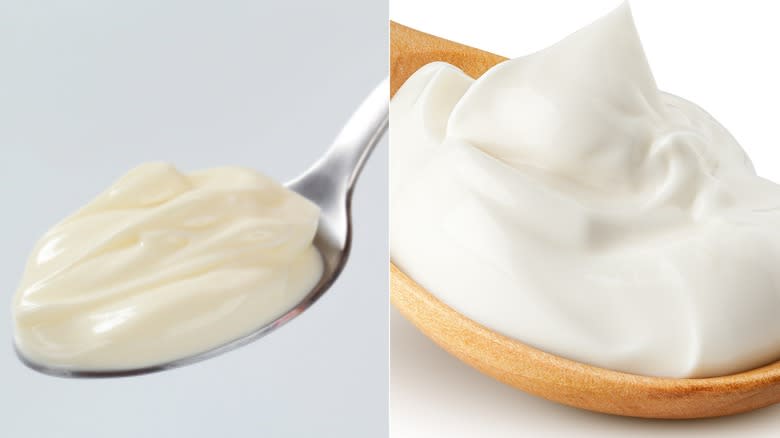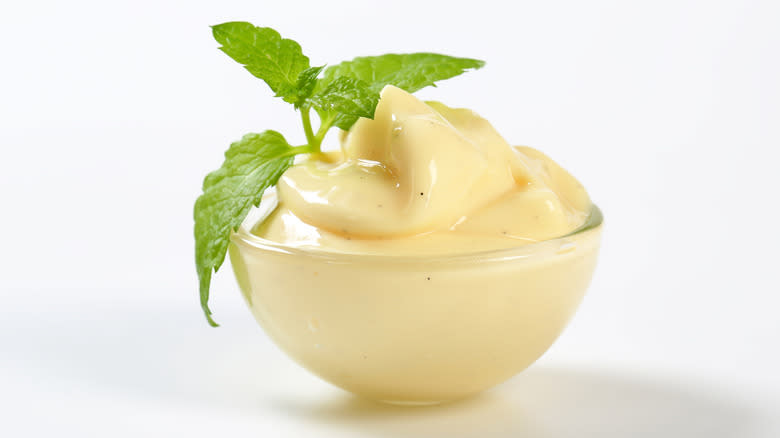Crème Anglaise Vs Fraîche: Is There A Difference?

There can never be too many different kinds of cream, but it's certainly true that there are a lot, and that sometimes their differences are so subtle that it gets confusing trying to tell them apart. Eyebrow raisers range from trying to figure out the difference between double cream and heavy cream to learning that canned cream and squirty cream are, in fact, the same thing. It's just a weird (but accurate) British naming convention.
Let's add some European flair to the trivia. What about crème fraîche and crème anglaise? Translating the names from the original French helps a little bit: crème fraîche means "fresh cream", which is nice and obvious. However, "English cream" offers no help at all.
The difference between the two dairy products is pretty stark, in actuality. Crème fraîche is similar to sour cream (but not actually sour cream as there's still a difference there). The "anglaise" in crème anglaise also makes a lot more sense when you realize what it is. Basically, it's custard.
Read more: 16 Little-Known Facts About Salt
What Is Crème Anglaise And How Do You Use It?

Crème anglaise is made by blending milk and/or cream with eggs, then gently heating the combination on the stovetop until it thickens. Once it reaches its ideal consistency, a day in the fridge finishes the cooking process. It's typical to add a sweetener to crème anglaise as well like vanilla pods, lemon juice, or caramel. Vanilla is the most common, though.
One of the key facets of crème anglaise is that it is usually utilized in sweet foods. For example, like any good custard, crème anglaise is at its best when poured over the top of a cake or other type of pastry.
For that truly English feel, get stuck into a sticky toffee pudding or a sponge cake that's swimming in this light, creamy custard. Alternatively, if you've used vanilla in your crème anglaise and have an ice cream machine or churner handy, you could turn your crème anglaise into vanilla ice cream.
Elevate Your Meals With A Spoonful Of Crème Fraîche

Compared to crème Anglaise, crème fraîche is a lot more versatile. You can use it to elevate savory dishes like soups, pasta sauces, and scrambled eggs. Crème fraîche can also fluff up your cheesecake, mousse, or frosting. One of the biggest differences between crème fraîche and crème Anglaise is that crème fraîche usually starts with unpasteurized cream.
According to the Larousse Gastronomique, crème fraîche is created when "a lactic bacteria starter has been added [to cream] which thickens the cream" (via Kendall Farms). We don't all have a dairy processor out back but luckily all you need to make crème fraîche at home is cream and buttermilk. By combining the two in a jar and placing the mixture in a dark, cool area for 24 hours, you can emulate the fermentation process through the introduction of lactic bacteria present in the buttermilk.
Once you've waited long enough to allow the mixture to separate, ferment, and become crème fraîche, it's time to open up your jar, give it a mix, and add great dollops of it to just about anything you like. With this knowledge, you can expertly apply crème fraîche and crème Anglaise to elevate your dishes.
Read the original article on Mashed.

